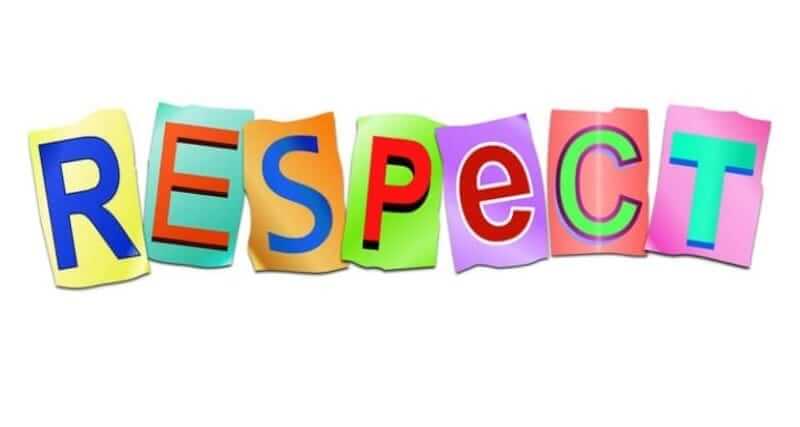October is just around the corner, which means it is time for the “Week of Respect” to return to a school near you. Annually, New Jersey mandates public school districts across the state to embed this special week into their everyday schedules. I know what you’re thinking – respect should be given all of the time, so what’s the need for an entire week dedicated to it? As we know, bullying has become more prevalent within schools since the debut of easy internet accessibility and rising social media use. The “Week of Respect” was created with the intention of celebrating and embracing the impressive diversity present in New Jersey schools. This week-long event is not limited to bullying policies or tolerance; it also includes respect for self and is geared towards staff development, too. Respect is a generic term, but can be interpreted in many ways.
First…what can you as a teacher do to involve your students in this meaningful week?
I get it – you don’t want to stray from curriculum and stop teaching content to address respect (which you already did while explaining your expectations on the first week of school). However, there are ways to intertwine these important life lessons for your students without stopping dead in your tracks. Here are some activities (easy to modify if needed) and tips to celebrate the beauty of diversity that embodies all of our schools.
Elementary Level Activities
Elementary School is where character building begins and relationships are formed. “Show and Tell” is always a great go-to for students to express important pieces of themselves through open discussion and sharing. However, a simple starter game of “Simon Says” will do as well. In this case, “Simon,” or the teacher, will be promoting tolerance to the students. For example: “Simon says raise your right hand if you are ____ years old.” “Simon says jump up and down if you have blue eyes.” “Simon says stand on one leg if you can speak another language.”
This basic childhood game is actually exposing the diversity of the classroom in a simple and enjoyable way. Afterwards, students will be required to locate a classmate who indicated different traits than he/she did and discuss them. Since elementary school teachers instruct all subjects, it is up to their discretion to assign a form of assessment on the activity. An ELA example could be to write and draw a picture of how you liked your classmate’s unique trait; for example: how someone’s ability to speak another language inspired you to try to do the same one day.
Lesson from: https://www.educationworld.com/a_lesson/00-2/lp2061.shtml
Middle School Activities:
Physical, hormonal, and emotional changes all seem to disrupt middle school-aged students at one point or another. As self-discovery begins, the need to fit in becomes stronger and bullying emerges more often. These specific factors make this week key for recognizing the importance of respect. Coming from a science teacher’s perspective, this next activity could hit the jackpot.
Inherited traits are always fun activities to explore because they are student-centered. Students will be required to walk around the classroom and note observations of eye color, hair color, hairline, earlobe attachments, etc. from other students. Then, students will be instructed to make inferences on where they believe their classmates inherited these traits from. A list or chart can be created to organize the data to conclude percentages and ratios of how many students have these traits in the class vs. how many do not/have different ones. Then a discussion can be held or the children can create a “Flipgrid” (student-recorded videos) of how we as a society should behave in light of these inherited differences.
Lesson from: https://www.edutopia.org/discussion/activities-understanding-respect-and-diversity
Flipgrid: https://flipgrid.com/
High School Activities:
High School is a rather difficult time in some students’ lives because this is where fitting in is most prevalent in a child’s school experience. As the transition from a teenager into an emerging young adult begins, life can be confusing and self-esteem can be at risk. The same lesson from the middle school section above can be utilized here in a Biology classroom where students can investigate the ideas of phenotypes/genotypes and create Punnett Squares for inherited traits.
Down the hall in History class, we often speak about individuals who struggled, but paved the way to their own success by discovering their strengths. This idea is something we should observe in ourselves, too, which is why this next activity can be used in an ELA classroom as well. Students will be required to interview a classmate and interview them to identify five strengths they possess that they are proud of. Each student is required to give no less than five, as this promotes a healthy learning environment and positive self-reflection. Afterwards, students will be asked a series of questions about their partner such as, “Did you expect to have so much in common?” Then, each individual will be responsible to hang their list of strengths in a common place they visit: the bathroom, bedroom mirror, or in their car, to give constant reminders that they are important and stronger than they sometimes believe.
Lesson from: https://www.overcomingobstacles.org/updates/wp-content/uploads/2016/01/RESPECT.pdf
As teachers, we should make it a habit to reflect on this important topic of respect. We know that this should be at the top of our to-do list more often, but somehow, sometimes, we fall short. As teachers, one of the most powerful tools we have is our smile: it can make a student’s day. This sounds cliché, but before we judge a book by its cover, let’smake sure to take the time to discover what’s carefully crafted inside first.
Helpful Links and Resources:
Anti-Bullying Policies
https://www.stopbullying.gov/ – this site informs us that New Jersey’s anti-bullying laws prohibit harassment towards an individual’s race, ethnicity, disability, and sexual orientation – just to name a few.
Facts specific to New Jersey’s diverse population:
-
- Autism Spectrum Disorder (ASD) is most prevalent in NJ out of all 50 states. 1 in 34 children are diagnosed with the disorder. https://www.autismnj.org/understanding-autism/prevalance-rates/
The Law Against Discrimination (LAD) mandates that students in public schools be permitted to use sex-segregated facilities, such as bathrooms and locker rooms, in accordance with their gender identity or expression. https://www.njsba.org/news-publications/school-leader/novemberdecember-2015-volume-46-3/gender-identity-and-school-law/
Week of Respect (2017): https://homeroom5.doe.state.nj.us/broadcasts/2017/AUG/29/16988/Guidance%20for%20Schools%20on%20the%20Week%20of%20Respect%20and%20School%20Violence%20Awareness%20Week.pdf
NJ Policies – HIB: https://www.state.nj.us/education/students/safety/behavio
Casey Downie, BA P-12 Biology/Teacher of Students with Disabilities
6th Grade Science/Special Ed. teacher – Thompson Middle School, Middletown Township, NJ





